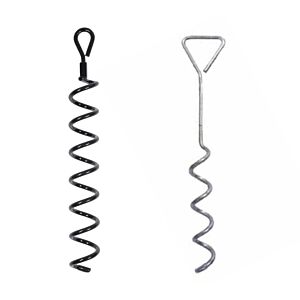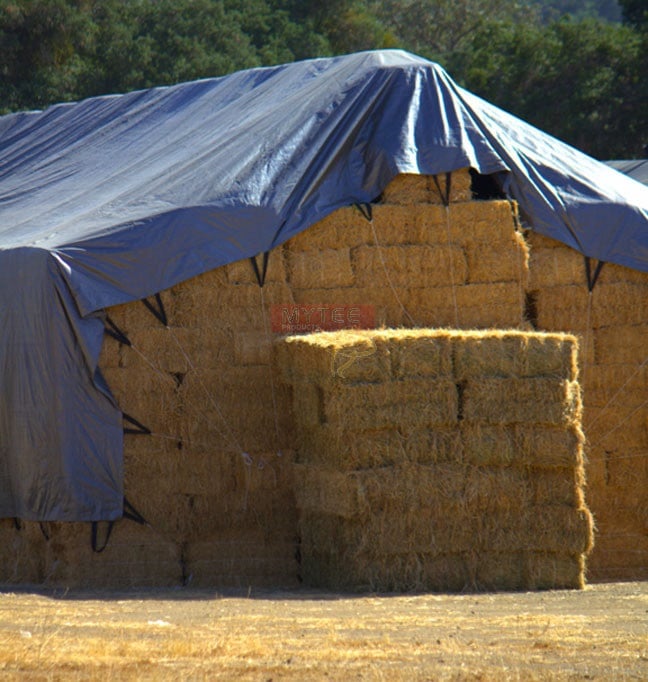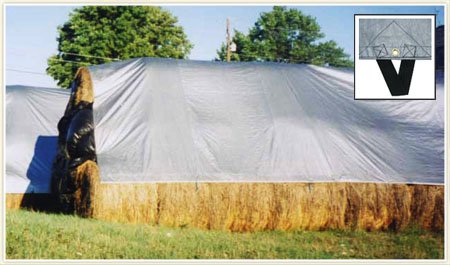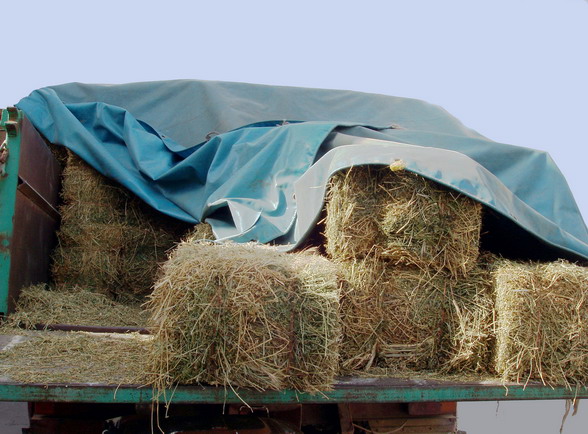If old man winter were an actual person, he might be nice enough to warn you of what he has planned over the next several months. He might ask farmers if they have enough hay tarps to protect what they plan to store. In truth, old man winter cannot ask questions, but we can. So, how are you looking for hay tarps?
The thing about hay tarps is that getting them in place as early as possible works to your advantage. It is a lot easier to properly deploy a tarp in warmer, drier weather than it is in the middle of that first winter storm. Therefore, it also works to your advantage to recognize the signs of the weather to come early enough to get those tarps in place.

Life in the Old Days
Long before there was an internet, cellphones, and all the other comforts of modern life, farmers looked for natural signs that winter was coming. They paid attention to the thickness of the coats of their livestock, knowing that those coats would fluff out as winter weather approached. They paid attention to migrating birds and foraging animals like squirrels who were busy stockpiling their winter food.
At the earliest signs of the approaching winter, farmers knew they had to get their hay in from the field. Out came the wagons and horses for a multi-day marathon of bailing, transporting, and stacking. Then all that hay had to be covered with some sort of protection.
Today, life is a lot easier. We have tractors to bring hay in from the field. We have advanced weather equipment that more accurately predicts when winter weather is coming. And, of course, there is the internet. Farmers can order their hay tarps online and have them delivered right to their doors. The convenience of modern life makes it a lot easier to protect a crop from moisture, mold, and pests.
Cover That Hay Now with Hay Tarps
The calendar has turned to November and the holiday season is fast approaching. That means the time for planning has long since passed. Now is the time to put those plans in motion and the time to get that hay covered.
Remember that the biggest enemies of hay at this time of year are pests and precipitation.Hay tarps alone may not be enough to keep the pests out. You will have to look at other solutions for that. Well-deployed tarps held down with strong ropes and anchor points should be enough to keep the precipitation away from crop.
There are lots of different methods for stacking hay prior to being covered. One of the more common methods is the A-frame. An A-frame stack is usually 3 to 4 bales high having single row at the top to create a peak. You then throw your hay tarps over the stack and secure them to anchor points driven into the ground. The resulting frame helps snow and rain run off rather than pooling.
Regardless of your stacking method, make sure your hay tarps extend over the edge. It allows the moisture to fall away from the hay. If you set tarps right down the side of the stack, you are inviting precipitation to pool at the base. It will not serve the purpose of tarping.
Old man winter is knocking. If you are a farmer, he’s asking whether your hay tarps are ready. If you are not ready for winter, don’t delay. Order your hay tarps from Mytee Products today.












